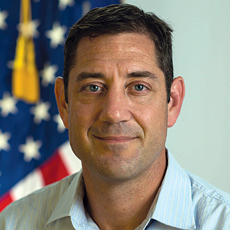
Nursing facilities can feel comfortable with residents interacting with family and friends during the holiday season. But the Centers for Medicare & Medicaid Services is reminding facility operators not to let core infection control and prevention principles slip during the hustle and bustle.
Infection with SARS-CoV-2 is still very much a risk, CMS administrators said in a Tuesday stakeholder call. The call covered the details of the agency’s recent Omnibus COVID-19 healthcare staff vaccination rule, which took effect on Nov. 5. But speakers also honed in on the importance of measures needed to keep transmission in check while supporting what they said is the “vital resident right” of visitation.
Fully 86% of nursing home residents and 74% of staff are fully vaccinated and COVID-19 transmission risks are greatly mitigated in these settings, said Kara Jacobs Slifka, CMS medical officer. But the vast majority of the United States remains in the high-transmission risk category for COVID-19, she cautioned. “So the most important message I have for all of you is to use source control,” particularly masks, she said.
“There is no such thing as a no-risk scenario,” added Evan Shulman, CMS director – Division of Nursing Homes. But residents who are aware of their risks can make their own decisions about their lives — including visitation — per federal requirements.
Don’t revert to pre-pandemic behavior
During the holidays, facilities should not revert to pre-pandemic behavior, and they still need to adhere to the core principles of infection prevention and control, Shulman added.
“Don’t let being vaccinated be an excuse for letting your guard down on all the things we know help reduce the spread of COVID-19,” he said.
Beyond source control and hygiene efforts, physical distancing will be crucial, he said. Remaining vigilant also means encouraging unvaccinated visitors not to visit if they have been exposed to the virus, (vaccinated visitors may still visit if they have been exposed), and offering to test visitors if possible, he added. Potential visitors who test positive or have symptoms should observe a quarantine period before stopping by, but “other than that, visitors should be allowed to enter,” he said.
Juggling resident wishes may require special structuring of visitation, Shulman suggested. Facilities may want to explain that they can’t have all families in the facility at one time, for example. Structured time slots can help limit the number of visitors at one time and ensure appropriate physical distancing throughout the facility.
“We shouldn’t be having large gatherings, large parties, particularly when the holiday season is upon us,” he said. “We don’t want to create a situation where physical distancing cannot be maintained.”
Preventing the spread of COVID-19 has never been accomplished by just one action alone, such as vaccination, he cautioned. The more mitigation, the more the facilities can reduce the risk of transmission.
Vaccinated residents can unmask with family
This said, residents and family members can unmask to eat together if fully vaccinated, while maintaining physical distance from other residents and their families. Residents can also leave the facility and follow specific CDC guidance on whether they need to quarantine when they return.
One of the most heartbreaking things about the pandemic has been the need to separate nursing home residents from their loved ones. The other is, of course, the terrible toll of resident deaths, Shulman said.
“If there are two things you remember about what to do around this time for residents, it’s to remember your core principles for infection prevention and control and get your booster shot,” he said.
CMS’s updated nursing home visitation policy can be found here.



